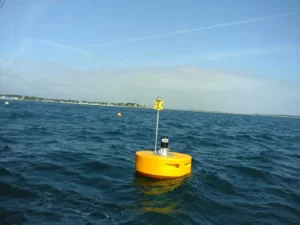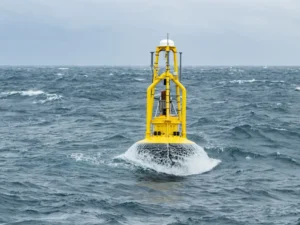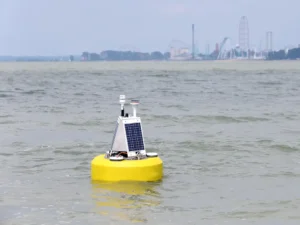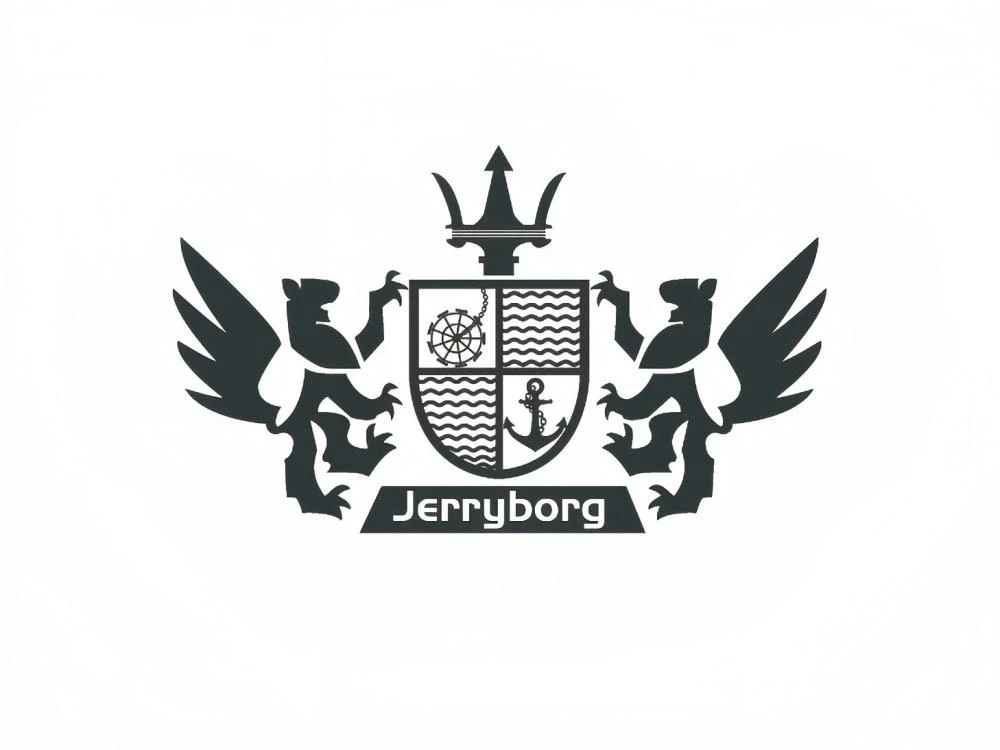Introduction
Whenever a ship is sailing in the sea, the prime subject is the safety of the journey. Humans have been using different points to warn the vessels about dangers for centuries. Technology wasn’t very advanced, and wood logs were a preferable choice until the 19th century. Since then, you can explore the metal materials floating in the marine water— buoys! Do you know the purpose of such objects? They help vessels tie on the place or let the captain know about the submerged objects and potential threats. This way, the chances of accidents have been reduced significantly. Today, we will dive deep into such a safety system, types of buoys, and their critical benefits for the marine environment.
What are Buoys?

Buoys are specialized objects or navigation points used to guide ships. Buoys play a crucial role in assisting the ship owners as they can help locate the submerged channels or objects that can threaten the boat. Sometimes, they also assist in mooring the ships on the anchor points.
Buoys can be bright, multi-colored, or occasionally dark, with a lamp to illuminate the night scenes.
What are buoys made of?
This can be a significant question because the materials used influence their toughness and resistance to UV rays. Polyethylene is the central material in most buoys. Here is the list of buoy materials you should know!
- Polyurethane foam materials
- Copolymer foam materials
- Syntactic foam materials
- Metals also
All such materials bestow a long life with a resistance to:
- Ultraviolet rays,
- Frost
- Seawater chemicals
Moreover, the wear and tear resistance also gives life to the buoys and helps them perform non-stop for years in harsh marine conditions.
What are buoys used for?

Don’t restrict your thinking about the buoys for the navigational aids. Instead, they can be worth in weight gold in the following cases:
- They help locate the underlying water channels, pipelines, or submerged navigation systems.
- Buoys assist in uncovering the locations of cables or potential threats to the ships. Danger signs show the risk of a vessel sailing in the given area.
- Mooring buoys aid in the tying of the boat to the materials.
- Boat drivers can explore the safe water zones and keep their boats away from the prohibited regions.
- In the case of diving activities, buoys are super helpful in warning the boat drivers.
- An information buoy keeps the drivers under controlled driving covers and provides updates about the necessary points in the marine journey.
Types of Buoy

Various buoys are currently deployed in the marine sector to convey a specific message to the ships. However, we have listed the necessary types of buoys you should know about!
1. Lateral Buoy System
The lateral buoy system confirms the submerged channels and their directions relative to the coming boats.
Three types of lateral buoys are:
-
Port hand buoy
If a submerged channel is below, the port hand buoy helps locate it. Usually, it is on the left side of the channel and bears some odd numbers. The color is often green; even the illumination lets the ship owners know the underlying channels.
Port hand buoy includes the pillar, can, or esper!
-
Starboard hand buoy
In contrast to the port hand buoy, a starboard buoy is on the right side of the channel when the ship is heading upstream. It is red. Do you want to use the lamp for light? Use the red light that is specific for such buoys.
The cone-shaped apex portion helps find them. It bears even numbers and can be a pillar, can, or esper!
-
Bifurcation buoy
The name indicates the bifurcation of the channels. It is often a combination of the hand and starboard buoys defining the division of the channels at the installation point.
The top color of the main channel indicates which channel is passing. For example, if the large channel passes on the right side, you can get a starboard hand-bred colored buoy.
2. Junction day beacon buoy
Junction buoys are at the points where the two channels meet and combine. Knowing where the junction lies and the direction of the heading boats is crucial.
-
Starboard Junction Day beacon
Starboard junction buoys are diamonds with a red central triangle. The channel passes on either side of the starboard, giving indications to the ship owners. The preferred channel is on the right side of the buoy.
-
Port junction day beacon
A Port junction is a diamond-shaped buoy affixed to a material such as a rock, post, or tree. The central green square indicates the port junction. The preferred channel is on the left side of the buoy.
-
Hand junction day beacon
Hand junction buoys are different from lateral hand systems. They don’t have light systems and are square or triangle-shaped with a central spot. The preferred channel is on the left side of such buoys.
3. Isolated Danger Buoy
You need to know about different special buoys in the marine areas.
-
Isolated Danger Buoy
Isolated danger buoys indicate a large rock piece or a sunken boat that can cause an accident if a ship passes through it. The black and red colors show the dangerous area and warn ships on time.
-
Anchorage buoy
An Anchorage buoy is specific for the anchoring of the ships. Its color is yellow with some black hues. Moreover, a blinking yellow light marks its position on the place.
-
Cautionary buoy
A cautionary buoy is another significant point that warns boat captains about upcoming danger areas. It is yellow and often installed at regions such as firing ranges, raceways, seaplane bases, and underwater structures.
-
Mooring buoy
A white buoy with an orange stripe symbolizes a mooring buoy. Such buoys have a hook and help moor the ship.
-
Information buoy
The information buoy offers some types of information to the boat’s drivers. Such boats have a middle square with lines above and below it. The square in the middle of the buoy contains the information needed at the spot.
-
Hazard buoy
Hazard buoy marks the hazards such as rocks or shoals. Such buoys have orange bands above and below the diamond shape. A diamond-shaped pattern is often in the middle with an orange color. Above and below the diamond, you can read the message.
-
Control buoy
Such buoys talk about the maximum speed or energy. They have the same patterns of lines as the hazard buoys. A circle in the middle of the buoy contains the necessary message, showing the maximum energy. Boat drivers get more cautious with such control buoys.
-
Keep out buoy
Keep Out Bouy discloses prohibited areas where boat access is not allowed. Its patterns are the same as those of the control or hazard buoys, including a white metallic stand with orange bands above and below. The central diamond cross indicates the prevention of boats.
-
Diving buoy
The diving buoy is a flag that shows divers’ activity. You can see such buoys in any part of the sea where diving occurs. A color flag with a half-cross white line is present on such flags. You can also find the alpha flags for such points. They have half-white and half-blue color patterns showing the diverse operation. The message is about slowing down the buoy.
-
Swimming buoy
If there is a swimming competition or activity for any purpose, swimming buoys are installed on the place. They are usually a line of well-organized white-colored metallic buoys with a yellow light. The light blinks every four seconds and shows the message to any boat or ship.
-
Cardinal buoys
Cardinal buoys are one of the safest options, offering complete vessel guidance. From all four cardinals, they present the danger areas and tell the users which one is the safest. Drivers follow such buoys and move to the safest water areas.
There are two cardinals with their colors.
- North Cardinal. It shows that the safest water is on the north side. North Cardinals have yellow and black colors pointed toward the north side.
- South Cardinal. These cardinals are also black and yellow. The bottom is black, showing that the safest water is on the south side, while the top contains yellow hues.
- East Cardinal. The bottom side of the east Cardinal is yellow, showing the east side, while the top is black. It shows that the safe water location is on the east side of the given area.
- West Cardinal shows the West as the safest port for ships and vessels. The top and bottom are yellow, and the central black portion shows the West location.
Ship owners need to understand the navigation points by the cardinal buoys and point out the dangerous points. Choosing safe locations can keep your boats safe and durable without any accidents.
Endnote
You can’t compromise on the safety of the boat. Sudden accidents can cause substantial financial losses. Do you know the only solution? Get a quality buoy and install it to make your journey practical. Also, the quality should be kept high since it guarantees lifetime support.
Jerry Borg Marine has been serving consumers for years. Our quality buoys and marine tools, such as fenders and chains, can do wonders. Invite safety to your doorstep and achieve high-level performance. Choose the superior quality tools right away!
